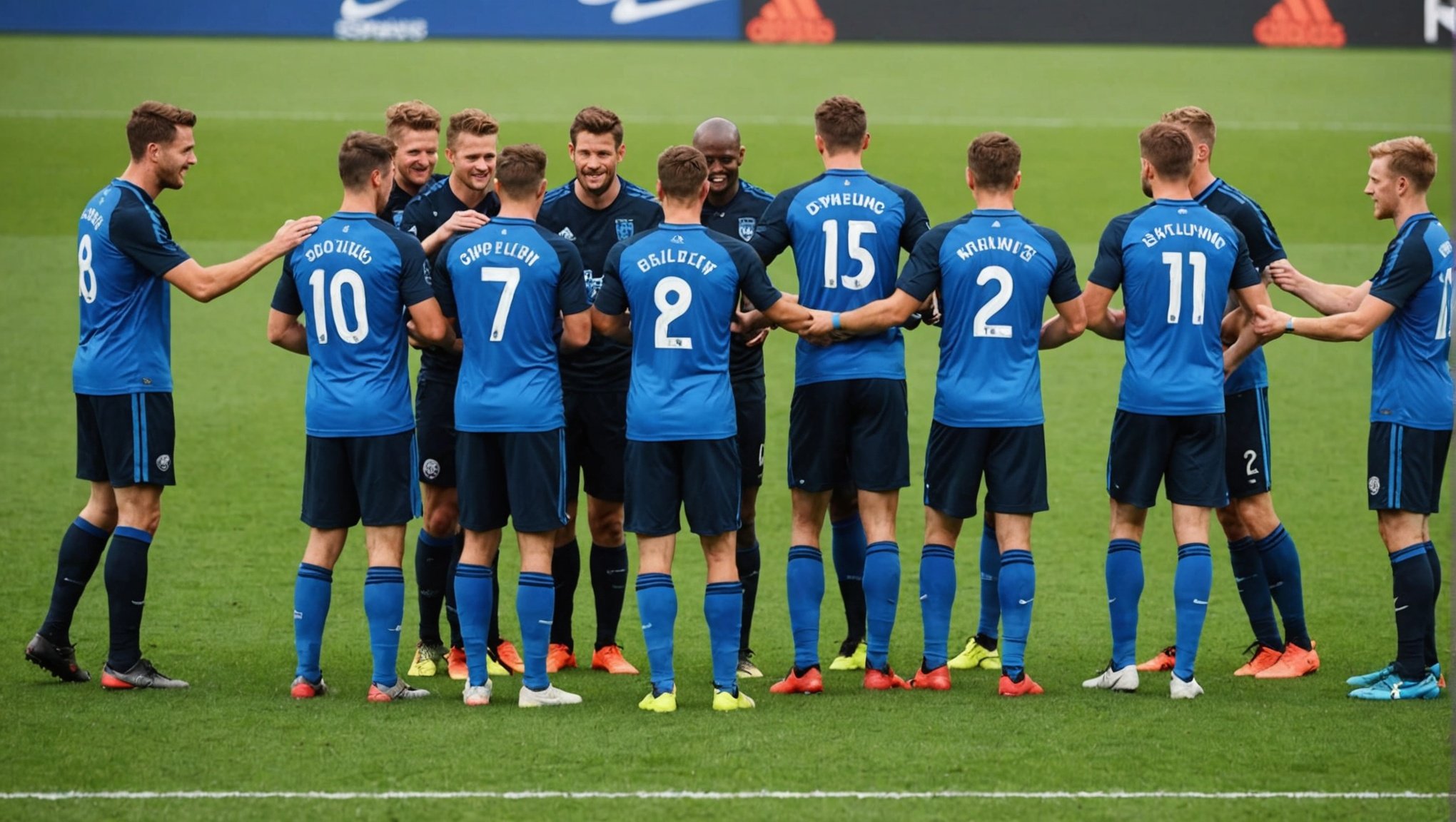Importance of Team Dynamics in Football
Team dynamics significantly influence football performance and are a crucial component of achieving success. Cohesion among players often translates to seamless on-field action, manifesting as coordinated plays and strategic adaptability. Football experts frequently emphasize that strong player cohesion can amplify individual talents and elevate the overall prowess of the team.
Studies illustrate a direct correlation between off-field bonding and on-field performance. Teams known for off-field closeness, such as shared activities and communication, tend to exhibit superior on-field results. This synergy enables players to anticipate each other’s moves and make split-second decisions, enhancing their competitive edge.
Have you seen this : Enhancing Talent Development: Strategies for UK Football Academies to Equip Young Athletes for Professional Trials
Expert Opinions on Teamwork
Experts in professional sports stress the importance of teamwork, highlighting it as a vital element for peak football performance. Coaches often cite examples where solid team dynamics have been the defining factor in turning the game around. According to prominent coaches, fostering team dynamics involves promoting trust, mutual respect, and open communication among players. This holistic approach ensures that each player, while managing their specific role, works synergistically towards a common objective.
In essence, player cohesion is not just about technical skills but also about emotional and social bonds that can bolster collective success. A team that prioritizes both on and off-field dynamics is more likely to achieve consistent victories and sustain long-term growth in their performance.
Also read : Mastering Ball Control: Essential Drills for Football Players to Elevate Their Handling Skills
Unique Off-Field Bonding Activities
Exploring unique experiences outside of the typical work environment can significantly enhance team dynamics. One avenue to consider is adventure-based activities.
Adventure-Based Activities
Outdoor escapades such as hiking or rock climbing provide an exhilarating way for team members to connect. Overcoming challenges together in these physically demanding environments fosters a deeper bond. The thrill of these activities demands trust and cooperation, which are essential aspects of effective team-building exercises. When teams tackle steep climbs or navigate trails, they develop resilience and sharpen their problem-solving skills. Repeatedly, teams that engage in such adventures report enhanced camaraderie and a newfound respect for each other’s strengths.
Creative Workshops
Engaging in artistic activities like painting or attending cooking classes offers teams a chance to explore creativity. These workshops are not just about art; they are ingenious tools for developing communication skills and fostering collaboration. By navigating creative problems as a unit, participants learn to appreciate diverse perspectives and work cohesively. Teams often find that bonding activities centered around art can reveal untapped potential and talents.
Sports and Game Nights
Another vibrant bonding option involves hosting sports or game nights. Encouraging light-hearted competition through recreational activities like sports tournaments or board games can strengthen team spirit. These events create shared memories and a sense of belonging, essential for long-term collaboration.
Practical Tips for Implementation
Integrating effective team cohesion strategies requires a structured approach. Start by clearly defining the objectives of your bonding activities. Are you aiming to boost morale, enhance communication, or encourage creative collaboration? Having well-established goals ensures that activities are purposeful and aligned with desired outcomes.
Implementation tips include tailoring the activities to the specific needs and dynamics of your team. Consider a mix of physical, creative, and discussion-based activities to cater to diverse preferences and abilities. Planning should involve selecting appropriate settings and resources, factoring in logistical details such as timing and availability.
For facilitators, a crucial piece of facilitator advice is to foster an environment that encourages active participation. Encourage open dialogue and inclusivity during activities, ensuring every team member feels valued and heard. Facilitators should be prepared with backup plans and adaptable to varying group dynamics.
Lastly, it’s essential to review and reflect on the effectiveness of each bonding session. Gathering feedback from participants can offer insights into what worked well and what could be improved. This feedback loop is instrumental in refining the strategy and enhancing the overall impact on team cohesion.
Research Supporting Off-Field Interactions
Research studies have repeatedly emphasized the significance of off-field interactions in enhancing team performance. These interactions contribute not only to the development of camaraderie but also to several psychological benefits that translate to improved on-field prowess.
Teams that invest in building relationships away from competition settings often experience enhanced trust and communication. This is because positive off-field dynamics bolster emotional connections among teammates, leading to a more cohesive team environment. In turn, such bonds facilitate seamless coordination during matches or games, significantly impacting overall team performance.
The science behind this phenomenon is well-documented. Expert commentary frequently highlights that athletes who feel psychologically supported by their peers perform better under pressure. This psychological backing fosters confidence and resilience, thus enhancing athletic execution on the field.
Moreover, research studies have shown that athletes who engage in shared activities, or participate in team-building exercises, exhibit strongly improved on-field communication. This results not merely from interpersonal understanding but also from an ingrained sense of belonging and security within the team structure. Such dynamics affirm the critical role that psychological benefits play in sports, suggesting a strategy for teams to optimize performance by prioritizing off-field interactions.
Case Studies and Testimonials
Success stories from the world of football provide a compelling glimpse into the transformative power of effective team-building strategies. Throughout various leagues, we find numerous case studies demonstrating how strategic planning and player development have propelled teams to success. For instance, the approach undertaken by football giants like FC Barcelona and Liverpool FC involves not only nurturing local talent but also fostering a cohesive team environment. These stories showcase the significance of strategic investments in youth academies and the tangible impact on a team’s performance in international arenas.
Beyond the success stories of clubs, player testimonials also offer invaluable insights into personal experiences on the field. Many players attribute their rapid improvement to the supportive structures within their teams, emphasizing the role of mentorship and continuous learning. For example, Lionel Messi has spoken about how his early years at La Masia, Barcelona’s training academy, were crucial in his development as a professional player.
From other sports, we glean lessons on the importance of camaraderie and shared goals. The New Zealand All Blacks rugby team, for example, highlights the strength derived from unity and culture. Such testimonials and case studies solidify the understanding that success in team sports often hinges not just on individual talent but collaborative spirit.






